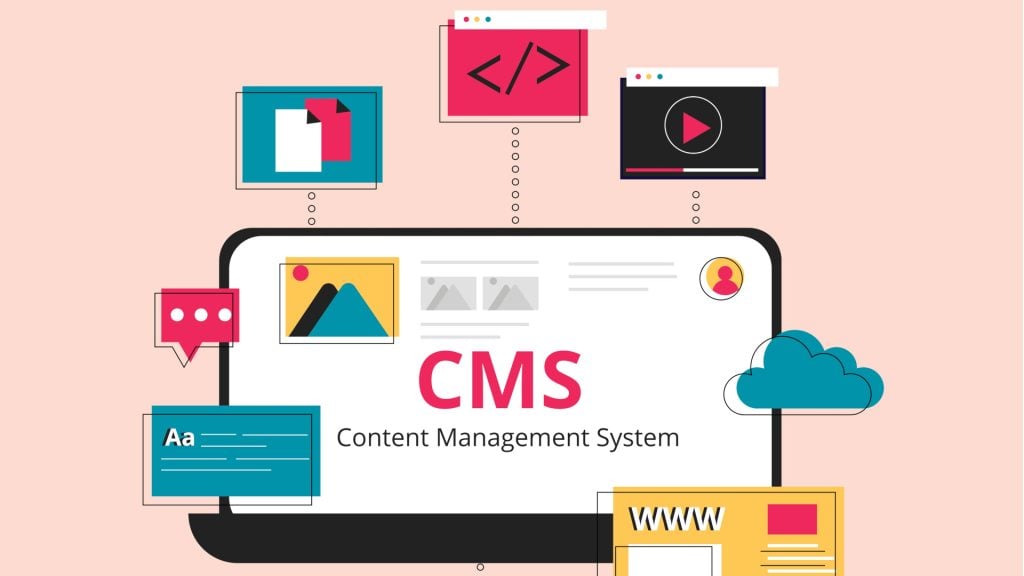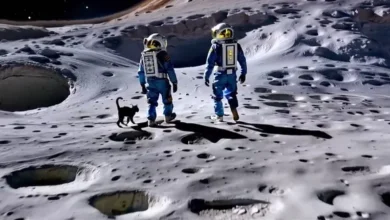As digital footprints become more extensive and varied, the need for a remedy that fulfills scalable, flexible, decentralized content is ever-increasing. Organizations are migrating from monolithic approaches to digital, distributed solutions that support multiple brands, multiple divisions, multiple locations, and multiple channels of delivery. Within this atmosphere, a headless CMS is the ideal foundational element. It empowers decentralized teams to function in a silo while allowing central functions to retain comprehensive governance, brand compliance, and technical integration. A headless CMS offers such structural agility by exposing structured content via APIs creating the opportunity for complex, modular and decentralized digital endeavors without compromising quality and governance.
The Need for Decentralized Digital Platforms
Decentralized digital platforms imply that ownership and management is spread among the team, department, or geography as opposed to a single centralized entity managing all. Yet this is a growing possibility for global enterprises, franchised brands, higher education systems, and even government agencies. For example, each unit may require some independent agency over publishing, microsites, or customer engagement in certain, select scenarios yet still work towards the overall organizational goals. A decentralized solution supports the notion of speed and relevance from a geo-focused engagement perspective and operational efficiency; however, it adds levels of complexity. Without the proper infrastructure, content can be all over the place, inconsistent, and unregulated. Until now. Enter headless CMS architecture. The Storyblok content platform is designed to meet these demands, enabling structured content governance at scale while empowering distributed teams to work independently within centralized brand and system guidelines.
De-Centralization Comes from Independent Content Management
The concept of a headless CMS is that it is independent of its content management and content rendering. In other words, unlike traditional CMS software that ties the two together providing a template and a front end with a dedicated backend headless CMS is more like a content warehouse it processes structured data and delivers it via APIs to any frontend. This independence is critical to empowering a decentralized notion. Teams can still create and own their front ends, their tools or applications as independent resources yet still leverage standardized content models. For example, the marketing team in the Northeast can create a product page in React to support their localized UX needs while the marketing team in the Southwest creates a campaign microsite in Vue all drawing from the same source. This independence encourages innovation without separation.
Role-Based Access Control Fostering Decentralization
Another critical way headless facilitates this decentralized world is through role-based access control which may be the most important part of supporting a decentralized environment. Different teams and stakeholders require different access levels and the ability to provide such control fosters effective workflow. For example, regional content editors can only get into their localized content while global teams can maintain access to brand messaging and theme/big picture structures. Developers can have access to their schemas and APIs without disturbing editorial users. Such access points allow for productivity from autonomous teams but also governance oversight so that no one gets out of control outside of their expected roles.
Maintaining Brand Standards Across Independent Yet Needed Teams
While the benefits and strengths of decentralization are powerful, there will always be a need for brand consistency across various teams and regions. A headless CMS also allows for brand consistency, as well, since it ties content to approved design systems, components and schemas which users can only apply. So, operating off an independent assembly frontend or tailored experience is still at least bound to its content structure and visual guidelines from the get-go. These integrations between CMS and style guide/design systems keep brand identity integrity in play even with the most decentralized of efforts.
Facilitating Speed of Global Content and Localization Requirements
A decentralized approach with a dispersed audience and workforce requires some means of localization, especially for global, multinational efforts. A headless CMS helps here as well, allowing teams to create language variations or regionally specific entries and subsequently localized elements without having to have separate repositories. Local teams can have their versions of content while global teams set taxonomy, governance and control over master templates. In addition, via APIs, content can be served to the proper audience location or device based on user selection or geolocation; thus, localization is a far more fluid workflow and still easier, faster access to compliant content than other methods or centralized efforts which bog down time to publication.
Ensuring Greater Multichannel Publication Without Duplicity
One of the key aims of a decentralized digital experience is the ability to publish across multiple channels from websites to mobile devices/apps to kiosks to digital signage, third-party agencies, voice applications, etc. A headless CMS allows groups to create their own interface based on their audience/needs while simultaneously pulling from the same content repository. This eliminates the need to replicate/reformat content for different uses; instead, components, blocks and repositories can be used across channels with only contextual application needed in the frontend. In this way, the messaging is consistent yet allows each channel to grow based on technology or UX needs.
Ability to Integrate with Legacy and Future Tech Stacks Without Missing a Beat
Because each team is its own siloed operation, they may use different tools, frameworks or workflows. Thus, the headless CMS is here for it. For legacy and future tech stacks, headless offers a flexible, API-first integrated architecture. Everything from CRMs to e-commerce platforms, analytics systems and in-house developed applications can be assimilated through the headless approach as it allows each digital business unit the freedom to choose which systems work best for them. This kind of interoperability fosters content ecosystem sustainability, as there is no one tech stack that works for everyone.
Governance Management via Workflows and Schemas That Scale
Just because a system is decentralized doesn’t mean there isn’t governance. In fact, once various stakeholders start making decisions about content independently, additional governance is critical to ensure quality and legality. Enter the headless CMS. As the technology remains centralized, governance opportunities exist across the organization to create scalable workflows, validation requirements and schema controls using best practices that don’t stifle teams from operating. For instance, global content managers can determine required fields, approval workflows and publication rules while localized editors have the flexibility to work within those constraints. This enables all enterprise content to have legal applicability, brand uniformity and at least a minimal degree of quality control.
Agility of Collaboration Across Non-Collocated Teams
When teams are non-collocated, integration efforts are easier with a centralized source of truth accessible anywhere any time. Whether content creators are in one area and developers in another or if designers and product managers are off working in their silos having a singular system allows for documentation updates, UI creation and workflow revisions regardless of distributed roles or contributions. Given the prominence of asynchronous work, a headless CMS offers the access and ease needed to ensure that teams are able to move quickly without losing sight of the overall objective. Collaboration opportunities abound, including shared dashboards, content previews and in-line commenting, which allows for teamwork without dependency roadblocks.
Reducing Costs from Not Duplicating Content Creation
Operational costs can skyrocket in a decentralized setting with unnecessary content creation. Thankfully, a headless CMS minimizes this through content reuse. A headless CMS is modular, so teams can have one version of brand assets, team bios, product details, legal disclaimers and reuse them in various locales and regions. There’s no duplication of entries within the same fields, and there’s less likelihood of using outdated assets, as they only need updating once and when publishing happens, it’s done at once and correctly everywhere.
Allowing for Multiple Branding Within One Content Ecosystem
When companies possess multiple brands under one corporate roof, they often struggle to independently create brand-centric content while still maintaining the larger corporate picture. Yet a headless CMS allows for multi-brand ownership without brands even needing to know content silos exist. Instead, universal templates, workflows, and taxonomies can be consistent while brands operate under their own content silos/tagging. This indicates that each brand team can uphold its unique voice, tone and style while complying with broader corporate expectations and regulations, allowing for better growth trajectories with less complicated maintenance later.
Allowing for Instant Publishing Visibility Across Locations/Endpoints
Publishing content and updates across its decentralized system in real time is essential for this approach to thrive. Therefore, anything constructed through a headless CMS and published via APIs goes live instantaneously across all integrative endpoints/channels. For time-sensitive promotion sales, changes in services, updates, new announcements, being able to push something out once and have it live everywhere instantly is essential. Instead of having lag time where one person sees something published because it was created to update cross-channel output, they’ll also see it where it needs to be; users will always see the most up-to-date information its supposed to have.
Supporting Innovation Through Frontend Freedom
Nothing inspires creativity like a flexible approach. A headless CMS allows not only frontend developers to play with the newest frameworks React, Vue, Svelte, for example but also to experiment with new concepts in AR/VR or voice experiences. Each team can create its own bespoke experience for its own end users without needing to adjust backend content. This type of infrastructure supports more choices and innovative alternatives while also simplifying the deployment of new digital experiences so that creativity becomes an everyday function of the content experience.
Conclusion: Headless CMS as the Foundation of a Decentralized Future
This is why enterprises support this type of infrastructure as the world becomes more decentralized. With access to teams and resources scattered all over fragmented projects, digital hierarchies and variable content-based needs, organizations require what fosters operation at scale. Organizations require performance and flexibility, but also independence, autonomy and collaboration without sacrificing consistency, governance and user experience. Things need to move faster; real-time engagement pushes context updates by location and time zones with customized efforts maximizing the business case. Enterprises have access to resources anywhere and everywhere from marketing branches to IT departments to HR and executive leadership often working in canvased teams across departments, time zones and different geographic locations.
There’s no better solution for a decentralized digital ecosystem than a headless CMS. This system offers a structured solution to content creation that’s entirely separate from delivery. Due to the decoupled architecture, one piece of content can go everywhere being used across websites, mobile applications, voice assistants, smart displays or any interface that hasn’t even been created yet. Headless puts modularity in the middle, allowing teams to operate independently and for various components of content to be reusable, rearrangeable, adaptable and localizable. Decreasing redundancy further drives overall operational efficiencies.
Moreover, the headless CMS embraces frictionless integration with all other technologies. Whether it requires a personalization engine, analytic tools, translation aids or commerce APIs, the headless structure allows your content to flow wherever it needs to without friction. This is an open ecosystem expected of any organization operating legitimately in many marketplace arenas, enabling digitally driven teams to provide new experiences analog frontends, micro-experiences, new channels and more: Its beauty is in the freedom from confining walls of a rigid system.
Simultaneously, a headless structure welcomes enterprise-wide governance solutions. Role-based access, validation rules, approval processes and audit logs ensure that decentralized heads don’t lead to chaos. While all teams can operate independently in their ability to manage and maintain their content, brand fidelity and compliance remain across all markets, channels and initiatives.
Globalization meets regionalization with a headless CMS. A single global content strategists can empower regionally-based marketers without losing sight of the brand. Developers can collaborate with designers even while granted strict autonomy for regionally-framed projects. Departments can more easily work cross-functionally across the organization while simultaneously allowing for localization at scale with opportunities for personalized user experience along any intended journey. Control with freedom to explore is how organizations can be flexible yet adaptive.
As companies grow comfortable navigating increasingly complex digital ecosystems with omnichannel delivery, multilingual avenues and sophisticated deployment structures, utilizing a headless CMS will no longer be optional it will reflect digital evolution, operational adaptability and sustainable growth capabilities for the long-term. Companies will be in the best position not just to survive the next wave of digitization but also to create it with the right technology, structure and mindset for success in decentralized tomorrows.






Good post! We will be linking to this particularly great post on our site. Keep up the great writing
I like the efforts you have put in this, regards for all the great content.
Aviator app for India – full crash experience